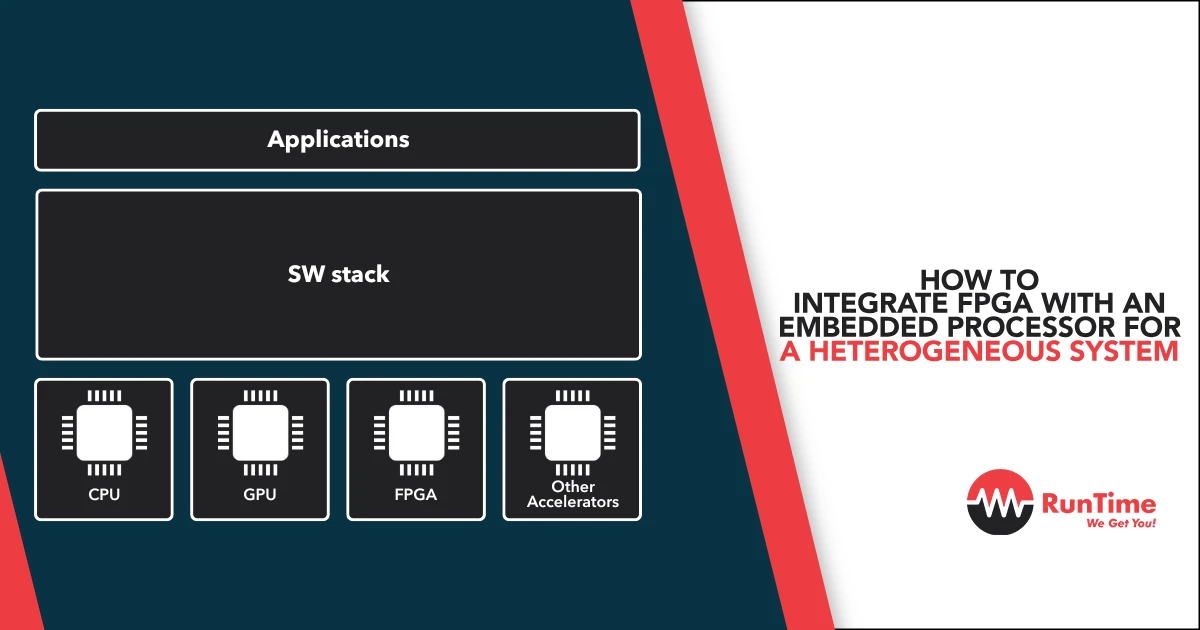In the pursuit of performance and efficiency, embedded systems are increasingly embracing a heterogeneous architecture – a powerful combination of embedded processors and Field-Programmable Gate Arrays (FPGAs). This article delves into the technical aspects of integrating these seemingly disparate components, exploring the benefits of task partitioning and the challenges that need to be overcome.
The Power of Heterogeneity
Embedded processors excel at sequential tasks and control flow. However, when it comes to computationally intensive algorithms with inherent parallelism, their performance can bottleneck the entire system. FPGAs, on the other hand, offer unparalleled hardware customization. Their reconfigurable fabric allows us to create custom logic tailored for specific algorithms, achieving significant speedups for parallel workloads.
The magic lies in exploiting these complementary strengths. By intelligently partitioning the workload between the processor and the FPGA, we can create a system that is both powerful and efficient. The processor handles control logic, system management, and tasks that benefit from a rich instruction set, while the FPGA accelerates compute-intensive kernels like signal processing, encryption, or image recognition.
Integration Techniques: Crossing the Divide
There are several well-established techniques for integrating processors and FPGAs. Here’s a closer look at two common approaches:
- Hard IP Integration: This approach utilizes pre-designed and pre-verified intellectual property (IP) cores for the processor and communication interfaces. These cores are integrated into the FPGA fabric during the design phase. Hard IP offers a robust and well-understood solution, but it can limit flexibility and may not be suitable for custom processor architectures.
- Soft-Core Integration: This approach involves embedding a soft-core processor, like the popular MicroBlaze from Xilinx, directly into the FPGA fabric. Soft-core processors offer greater flexibility for custom instruction sets and tight integration with the FPGA logic. However, they may have lower performance compared to hard-core processors.
Communication Channels: The Bridge Between Worlds
Effective communication between the processor and the FPGA is paramount for successful integration. Common communication interfaces include:
- On-Chip Memory (OCM): This shared memory allows direct data exchange between the processor and the FPGA with minimal latency. However, OCM size is limited by the available FPGA resources.
- Direct Memory Access (DMA): This technique enables high-bandwidth data transfers between the processor’s external memory and the FPGA’s internal memory without involving the processor core. This improves overall system efficiency.
- Peripheral Interconnect Bus (PLB): This standard bus interface facilitates communication between the processor and various peripherals, including the FPGA. While versatile, the PLB may introduce additional latency compared to OCM.
Challenges and Considerations
Integrating FPGAs with embedded processors presents several challenges:
- Design Complexity: Designing a heterogeneous system requires expertise in both processor architectures and FPGA design. Balancing performance, resource utilization, and power consumption adds another layer of complexity.
- Verification and Debugging: Verifying the interaction between the processor and the FPGA can be intricate. Specialized tools and methodologies are required to ensure proper functionality and identify potential bottlenecks.
- Development Tools: Development toolchains fogeneous systems may be less mature compared to traditional embedded development environments. This can lead to longer development cycles and steeper learning curves.
Innovation and the Future
The field of heterogeneous integration is constantly evolving. Here are some exciting trends to keep an eye on:
- High-Level Synthesis (HLS): HLS tools allow developers to describe algorithms in C/C++ and automatically generate hardware designs for FPGAs. This abstraction layer simplifies FPGA development and opens up the technology to a wider audience.
- Open-Source FPGA Tools: The emergence of open-source FPGA development tools like LiteX is democratizing access to FPGA design. This can foster innovation and accelerate the development of heterogeneous systems.
Conclusion
Heterogeneous integration of FPGAs and embedded processors offers a compelling path to achieving superior performance and efficiency in demanding embedded applications. While challenges exist, the potential benefits are undeniable. By leveraging innovative design techniques, communication protocols, and development tools, engineers can unlock the true power of heterogeneous systems and push the boundaries of embedded computing.
Hire the Best Engineers with RunTime
At RunTime, we are dedicated to helping you find the best Engineering talent for your recruitment needs. Our team consists of engineers-turned-recruiters with an extensive network and a focus on quality. By partnering with us, you will have access to great engineering talent that drives innovation and excellence in your projects.
Discover how RunTime has helped 423+ tech companies find highly qualified and talented engineers to enhance their team’s capabilities and achieve strategic goals.
On the other hand, if you’re a control systems engineer looking for new opportunities, RunTime Recruitment’s job site is the perfect place to find job vacancies.









